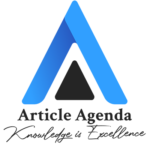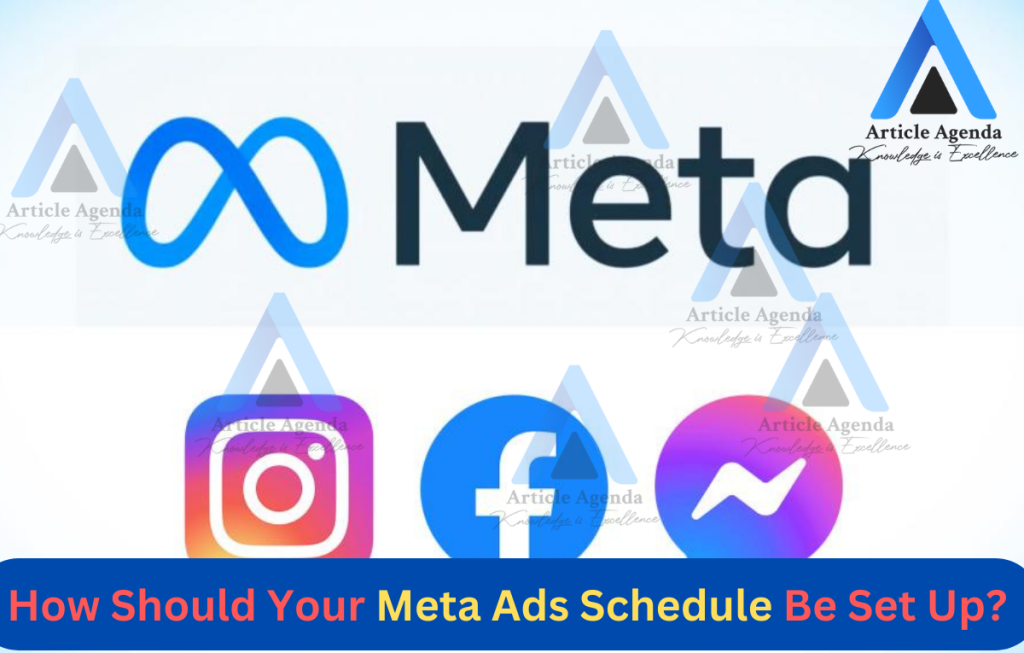Understanding ad scheduling in Meta Ads
As a digital marketer, it is crucial to understand ad scheduling in Meta Ads deeply. Ad scheduling refers to determining when your ads are shown to your target audience. By strategically setting up your ad schedule, you can ensure that your ads are displayed at the most reasonable times, maximizing their impact and effectiveness.
Ad scheduling allows you to control the visibility of your ads by specifying the days and times when you want them to appear. This feature is handy when targeting a specific audience more likely to engage with your ads during certain hours or days of the week. By utilizing ad scheduling, you can ensure that your ads are displayed when your audience is most active and receptive, increasing the chances of conversion and maximizing your return on investment.
Table of Contents
Why ad scheduling is essential for campaign success
Ad scheduling plays a crucial role in the success of your advertising campaigns. By carefully planning and setting up your ad schedule, you can optimize your ad spend and improve the overall efficiency of your campaigns. Here are a few reasons why ad scheduling is essential for campaign success:
1. Reach the right audience: Ad scheduling allows you to target your ads to specific days and times when your target audience will most likely be online. By reaching your audience at the right time, you can increase the chances of capturing their attention and generating leads or sales.
2. Optimize ad spend: By analyzing the performance of your ads at different times and days, you can identify the periods when your ads receive the most engagement and conversions. By focusing your ad spend on these high-performing periods, you can make the most out of your budget and improve the overall efficiency of your campaigns.
3. Increase ad visibility: Ad scheduling enables you to ensure that your ads are displayed during peak times with higher competition for ad space. By strategically scheduling your ads, you can increase their visibility and reach a larger audience, increasing the chances of generating clicks and conversions.
Read More: How do you create a social media content strategy?
Factors to consider when setting up your ad schedule
When setting up your ad schedule in Meta Ads, there are several factors that you should consider to ensure optimal performance. Here are some key factors to keep in mind:
1. Audience behavior: Understanding your target audience’s behavior is essential for effective ad scheduling. Analyze data on when your audience is most active, engaged, and likely to convert. This information will help you determine the best times to display your ads.
2. Geographic considerations: If your business operates in multiple time zones or targets specific geographic locations, consider your audience’s local time when setting up your ad schedule. Adjust your schedule to ensure your ads are displayed at the right time for each location.
3. Seasonality and trends: Consider seasonal factors and industry trends that may influence your audience’s behavior. For example, if you run a retail business, you should increase your ad spend during the holiday season when consumer spending is high.
Read More: What is a Social Media Marketing Company?
How to determine the optimal ad schedule for your business
Finding the optimal ad schedule for your business requires careful analysis and testing. Here’s a step-by-step process to help you determine the best ad schedule for your campaigns:
1. Analyze historical data: Analyze historical data from your previous ad campaigns. Look for patterns and trends in ad performance based on different times and days. Identify periods when your ads received the most engagement and conversions.
2. Conduct A/B testing: Perform A/B testing by running your ads at different times and days of the week. Compare the performance of your ads during these various periods to identify patterns and determine the optimal schedule.
3. Monitor and adjust: Continuously monitor your ads’ performance and adjust your ad schedule based on the data. Keep track of any changes in audience behavior or external factors that may impact the performance of your ads.
Read More: Connecting the Dots: How SEO, PPC, Email Marketing & Social Media All Work Together
Common mistakes to avoid when setting up your ad schedule
While setting up your ad schedule, it is essential to avoid common mistakes that can hinder the success of your campaigns. Here are some mistakes to watch out for:
1. Neglecting data analysis: Failing to analyze historical data and relying on assumptions can lead to poor ad scheduling decisions. Take the time to gather and analyze data to make informed decisions about your ad schedule.
2. Overlooking audience behavior: Every business has a unique target audience with specific behaviors and preferences. Refrain from assuming that your audience behaves like others. Understand your audience’s behavior and tailor your ad schedule accordingly.
3. Not adapting to changes: Market trends, consumer behavior, and external factors can change over time. It is crucial to regularly assess and adjust your ad schedule to align with these changes. Failure to adapt can result in missed opportunities and decreased campaign performance.
Read More: How to Get an ROI With Social Media Marketing
Tips for maximizing the effectiveness of your ad schedule
To maximize the effectiveness of your ad schedule in Meta Ads, consider the following tips:
1. Conduct regular performance reviews: Regularly review the performance of your ads based on different time slots and days of the week. Identify patterns and trends to optimize your ad schedule further.
2. Test different ad formats: Experiment with other formats to determine which performs best at various times and days. This can help you tailor your ad schedule to match the strengths of each ad format.
3. Leverage automation tools: Take advantage of automation tools available in Meta Ads to streamline the management of your ad schedule. These tools can help you make real-time adjustments based on performance data and save you time and effort.
Read More: The Ultimate 7-Step Guide to Social Media Content Creation
Monitoring and adjusting your ad schedule for better results
Monitoring and adjusting your ad schedule is an ongoing process that requires continuous attention. Here’s how you can effectively monitor and adjust your ad schedule for better results:
1. Track critical metrics: Monitor critical metrics such as click-through rates, conversions, and cost per conversion to assess the performance of your ads. Identify any fluctuations or trends indicating the need to adjust your ad schedule.
2. Make data-driven decisions: Base your adjustments on data rather than assumptions. Analyze the performance of your ads at different times and days and make changes accordingly. Data-driven decisions are more likely to yield positive results.
3. Regularly optimize your ad schedule: Continuously optimize your ad schedule based on the insights gained from data analysis. Experiment with different time slots and days to find the most effective campaign schedule.
Read More: How to Conduct a Social Media Audit
Best practices for managing your ad schedule in Meta Ads
To effectively manage your ad schedule in Meta Ads, consider the following best practices:
1. Start with a narrow schedule: Begin with a narrow ad schedule and gradually expand it based on data and performance. This approach lets you focus your ad spend on the most promising time slots and optimize your campaigns before scaling up.
2. Monitor competition: Monitor your competitors’ ad schedules and adjust yours accordingly. If your competitors are targeting the same audience, it is essential to be strategic and find opportunities where you can stand out.
3. Regularly review and optimize: Set aside regular time to review and optimize your ad schedule. This can help you stay ahead of changes in consumer behavior, market trends, and external factors that may impact the performance of your ads.
Read More: Is a social media marketing agency a good business?
Tools and resources for optimizing your ad schedule
To optimize your ad schedule in Meta Ads, consider utilizing the following tools and resources:
1. Analytics tools: Take advantage of analytics tools provided by Meta Ads to track and analyze the performance of your ads at different times and days. This data can help you make informed decisions about your ad schedule.
2. Heatmap tools: Heatmap tools can visually represent user behavior on your website or landing page. By analyzing heatmaps, you can identify the periods when users are most active and adjust your ad schedule accordingly.
3. A/B testing tools: Use A/B testing tools to experiment with different ad schedules and compare their performance. These tools can help you determine the optimal schedule for your campaigns based on real-time data.
Read More: The Key to Success with Facebook Ads: Audience Temperature
Conclusion
Setting up your ad schedule in Meta Ads is critical to running successful advertising campaigns. By understanding the importance of ad scheduling, considering key factors, analyzing data, and making informed decisions, you can optimize your ad spending, reach the right audience, and maximize your campaign’s effectiveness. Regular monitoring, adjustments, and adherence to best practices will further enhance the performance of your ad schedule. With the right tools and resources, you can continuously optimize your ad schedule and drive better results for your business in Meta Ads.
CTA: Start optimizing your ad schedule in Meta Ads today and unlock the full potential of your advertising campaigns. Monitor, analyze, and adjust your schedule based on data-driven insights to achieve better results.
Latest Post:
-
AI in Action: 14 Real-World Examples of How Industries Are Embracing Technology in 2024
In 2024, the use of artificial intelligence (AI) technology has become increasingly prevalent across various industries, revolutionizing processes and improving efficiency. From healthcare to finance, retail, manufacturing, transportation, agriculture, education, entertainment, energy, and security, AI has made significant strides in transforming the way businesses operate and deliver value to their customers. This article will explore…
-
18 Cutting-Edge Artificial Intelligence Applications in 2024
The rapid advancements in AI technology over the past decade have been nothing short of remarkable. From virtual assistants that can understand and respond to natural language to autonomous vehicles that can navigate the roads with increasing precision, the integration of AI into various industries and aspects of our lives has been transformative. As we…
-
Reliable And Secure WordPress Development Company
Introduction to WordPress Development As an experienced WordPress development company, we understand the importance of building reliable and secure websites for our clients. WordPress is one of the most popular content management systems (CMS) in the world, powering over 40% of all websites on the internet. Its flexibility, customizability, and user-friendly interface make it a…

